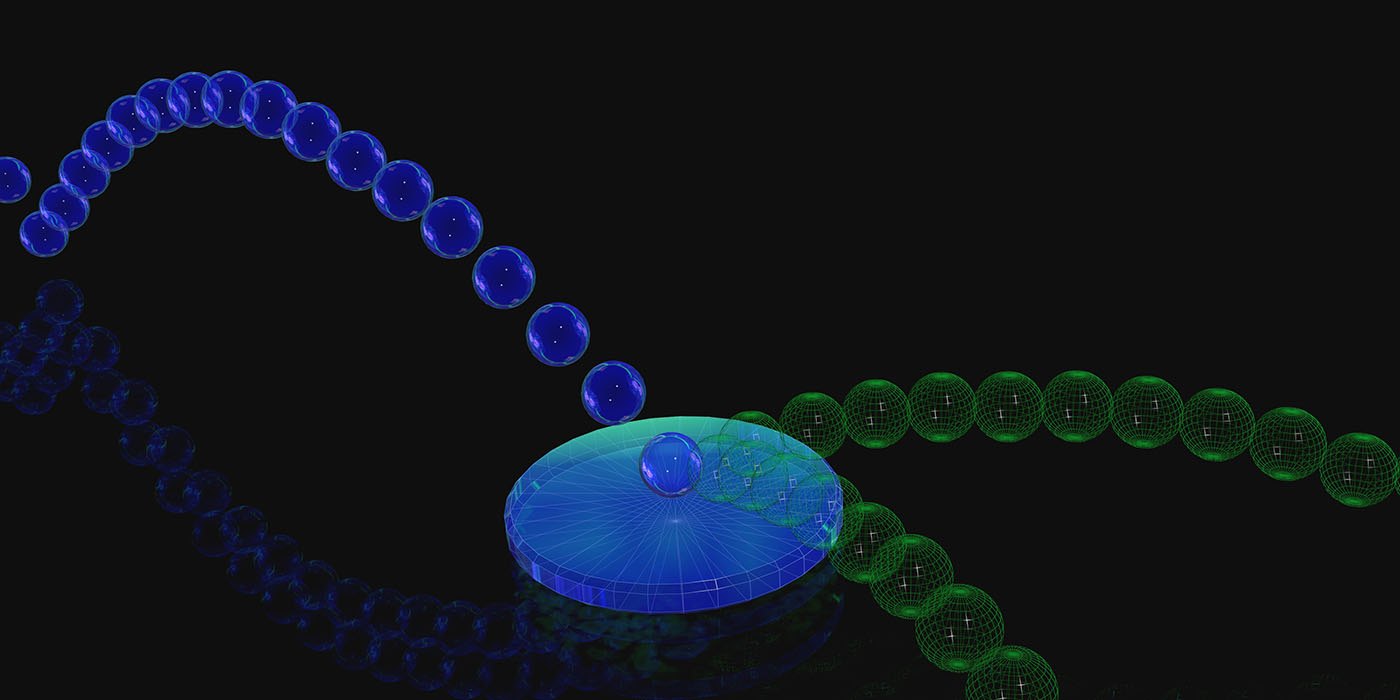Highlights
Quantum simulation explores all possible futures
 The many different potential paths of a stochastic process can all be simulated at once by a quantum machine, a team including CQT researchers has shown. Image: Mile Gu / Nanyang Technological University
The many different potential paths of a stochastic process can all be simulated at once by a quantum machine, a team including CQT researchers has shown. Image: Mile Gu / Nanyang Technological University
Researchers in Singapore have contributed to the creation of a machine that sees all possible futures. The quantum device simulates a kind of process that involves chance – following all possible paths into a superposition of future states. The work is published 9 April in Nature Communications and has received widespread media coverage.
CQT’s Jayne Thompson and Mile Gu developed the theory behind the device together with Carlo Di Franco from Nanyang Technological University (NTU). Mile is also an Assistant Professor at NTU. The experiment was then conducted by Farzad Ghafari, Nora Tischler and Geoff Pryde at Griffith University in Brisbane, Australia.
The approach works for 'stochastic' processes, which proceed in steps where each step has different possible outcomes with a certain probability of happening. It’s possible to model phenomena from stock market movements to the diffusion of gases as stochastic processes.
However, such simulations quickly become complex. "For instance, even if we have only two possibilities to choose from each minute, in less than half an hour there are 14 million possible futures. In less than a day, the number exceeds the number of atoms in the universe. This exponential growth makes looking at all possibilities incredibly taxing,” says Mile.
"This is where we thought quantum computing could help,” says Jayne. “When Feynman started studying quantum physics, he realized that when a particle travels from point A to point B, it does not necessarily follow a single path. Instead, it simultaneously transverses all possible paths connecting the points. We thought perhaps a similar phenomenon could be harnessed for modelling statistical futures, engineering particles so that their possible paths encode different possible futures.”
In earlier work published June 2018 in Physical Review Letters, Jayne, Mile and their colleague Felix Binder proposed a way to perform a quantum simulation of stochastic processes that preserves details of all possible outcomes at each step. This means keeping the quantum system used for the simulation and its prediction for the outcome in a coherent state, so the information stays in a quantum superposition. Previous simulation approaches would decohere the outcome at each time step.
The scheme was realised in an experiment using photons that have information encoded in their space-time locations. By sending the photons through multiple paths simultaneously, the prototype machine can create a quantum superposition of many potential futures, weighted by their probability of occurrence.
In this first proof-of-principle demonstration, the team simulated a perturbed coin. This experiment ran the simulation for 3 time-steps recreating up to 16 possible futures simultaneously in quantum superposition, but the quantum algorithm the prototypes are based on could scale without bound.
Even at this scale, the researchers could test a potential application. They could measure how quickly possible futures diverge depending on the bias of the coin. Simulating the futures for two different biases and interfering the superpositions gives a measure of difference. The team also want to explore how these simulation technique could be useful in predictive models for machine learning – and other to-be-discovered applications.
“This is what makes the field so exciting,” says Geoff Pryde at Griffith. “It is very much reminiscent of classical computers in the 1960s. Just as few could imagine the many uses of classical computers in the 1960s, we are still very much in the dark about what quantum computers can do. Each discovery of a new application provides further impetus for their technological development.”
Learn more
Related Stories
 | Zen and the art of quantum complexity November 19 2014 |
Want more efficient simulators? Store time in a quantum superposition March 02 2018 | |
Reversing cause and effect is no trouble for quantum computers July 18 2018 |






